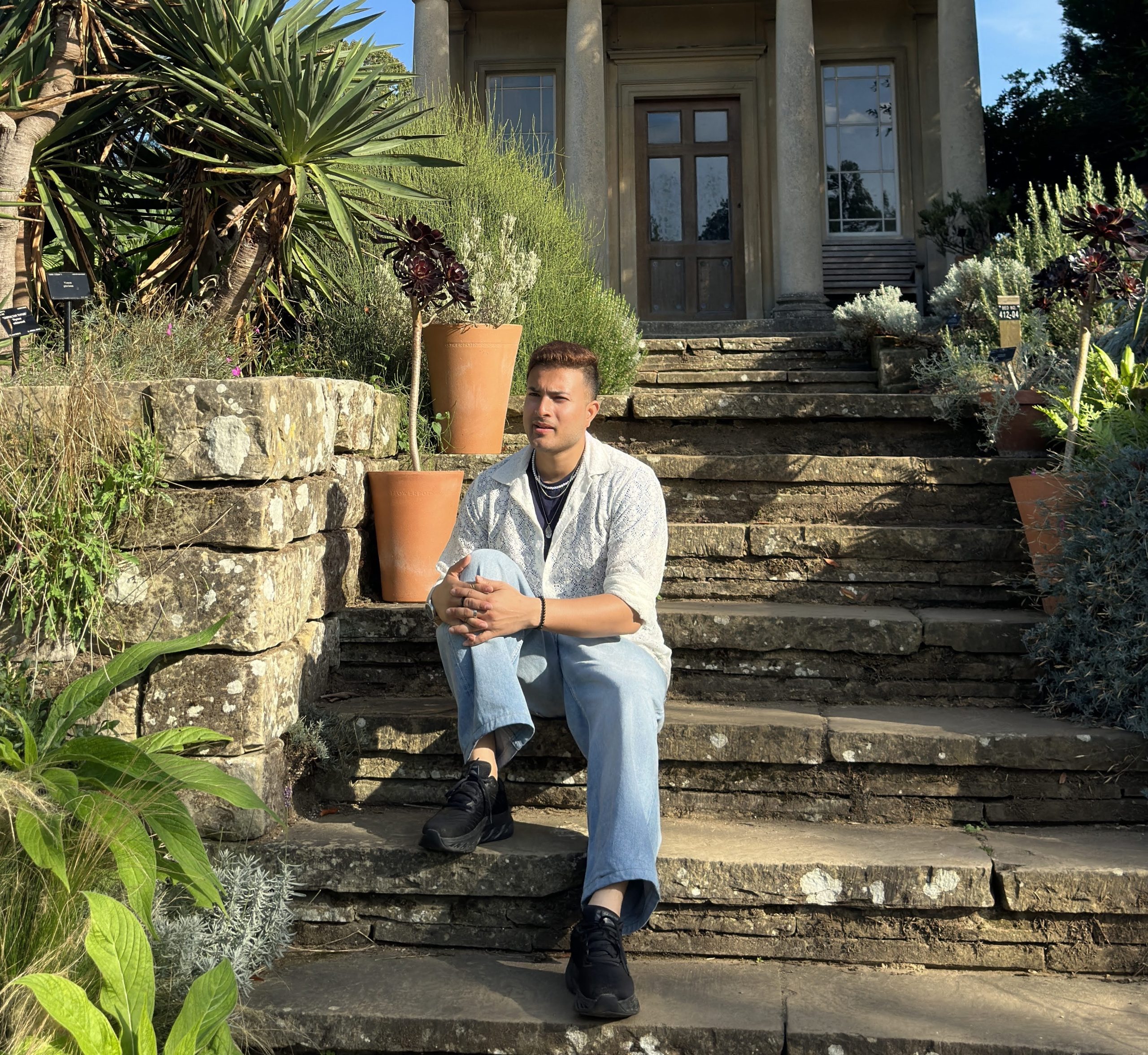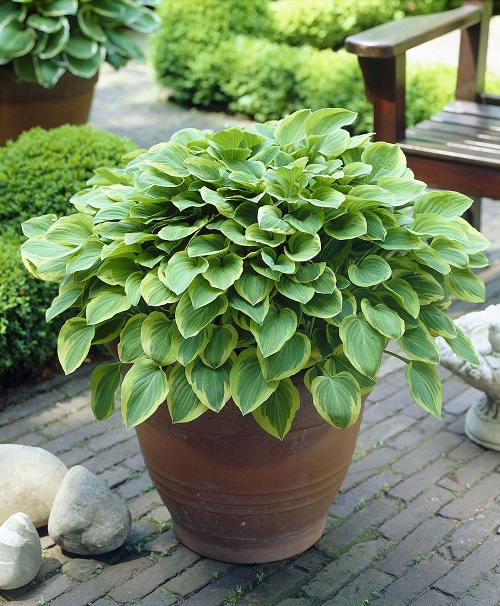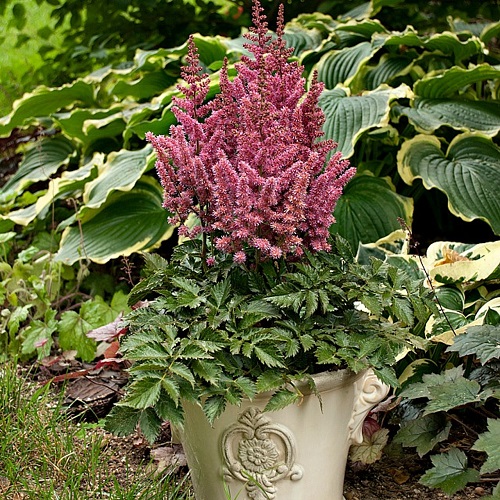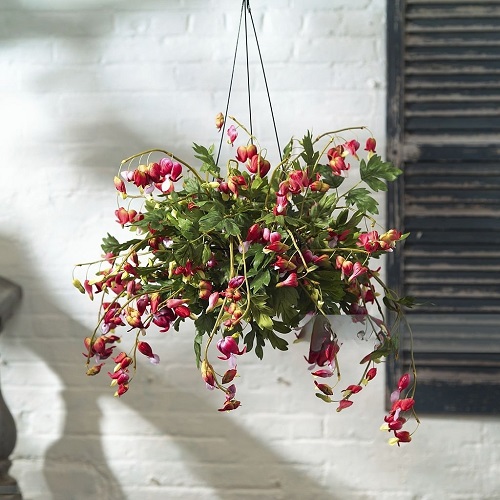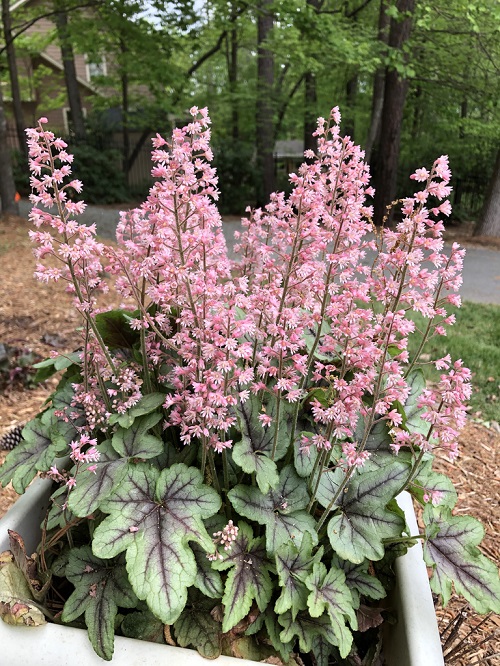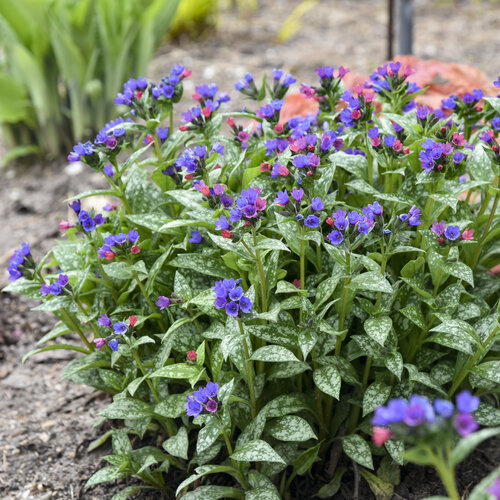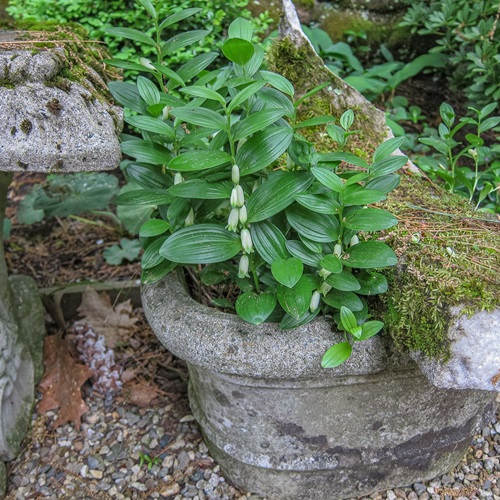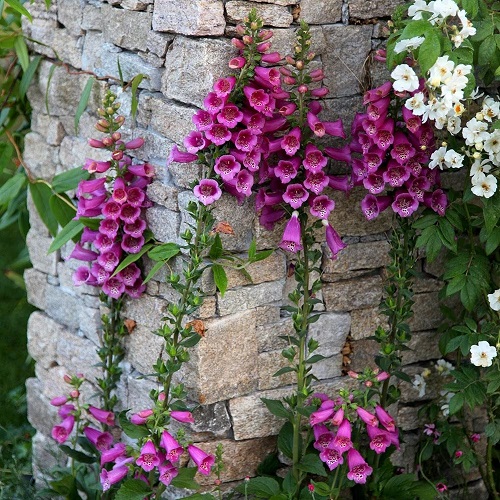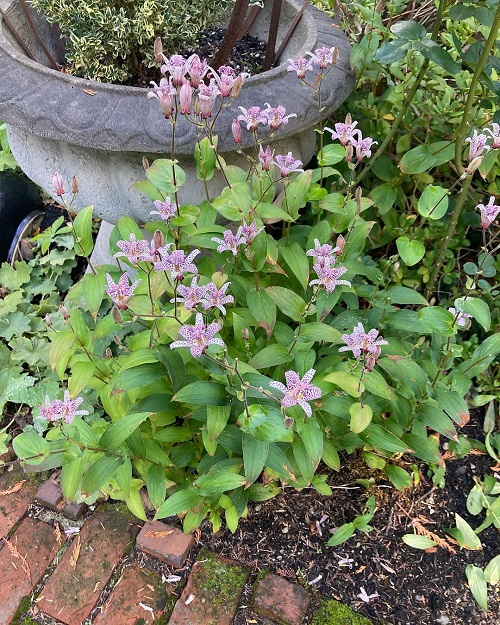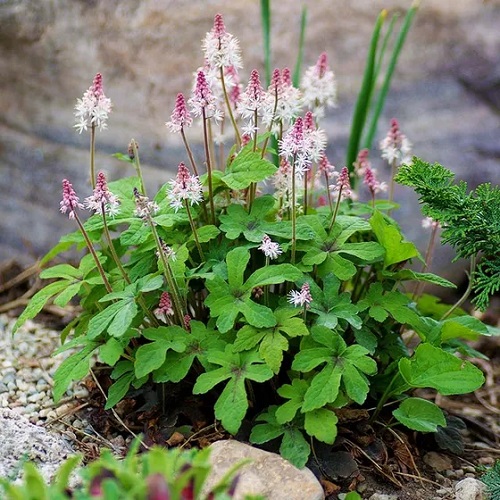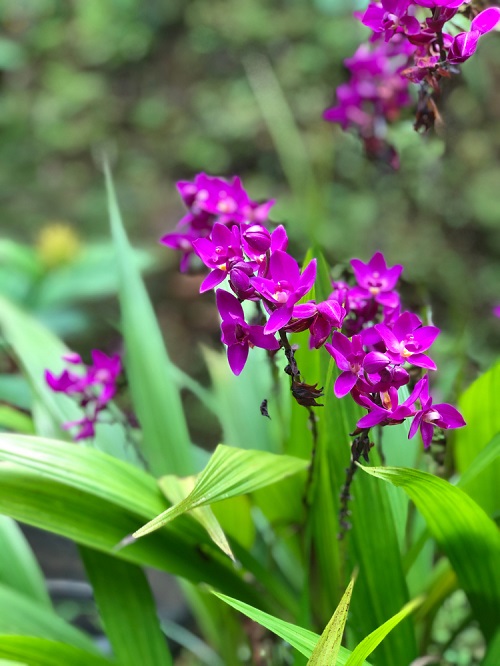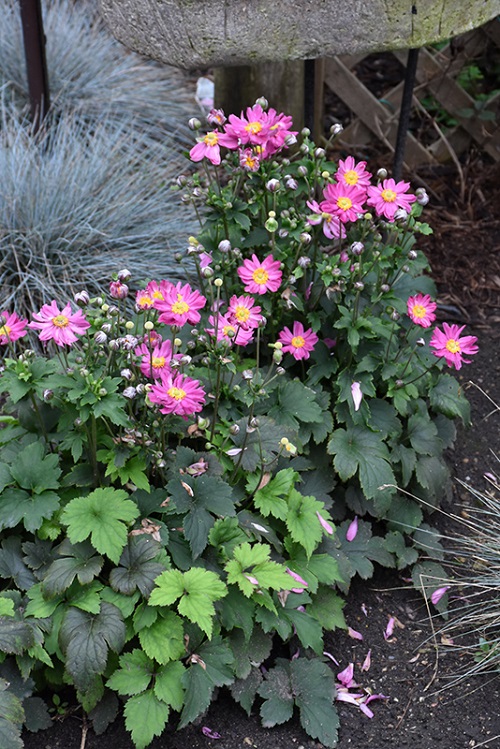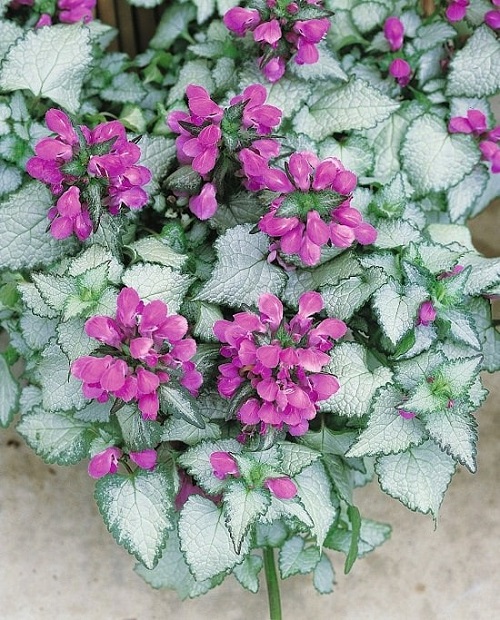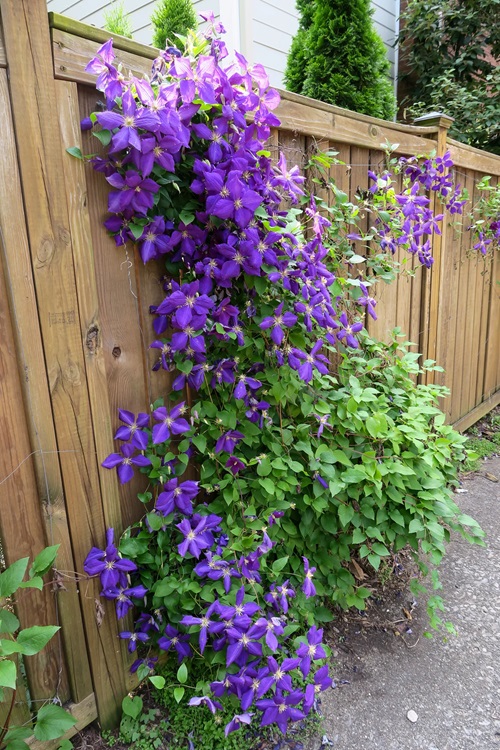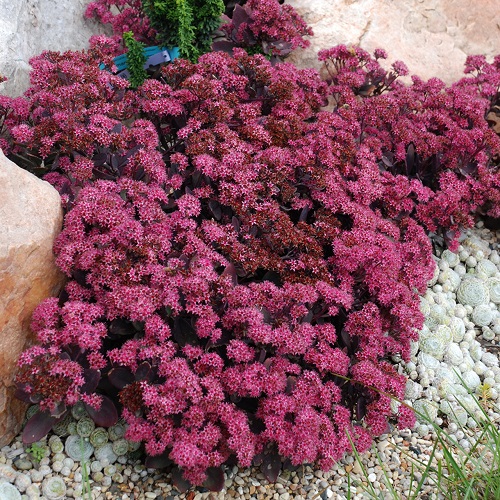Here is the list of the Best Partial Shade Perennials you can grow without worrying too much about the sunlight in your garden!
These Partial Shade Perennials are the perfect choice for those garden spots that enjoy the dappled sunlight of a canopy or the gentle shade of a building.
Best Partial Shade Perennials
1. Hosta
Botanical Name: Hosta spp.
USDA Zones: 3-8
Hostas are known for their attractive heart-shaped leaves in various colors of green, blue, or variegated patterns, adding texture to your partial shade garden.
2. Astilbe
Botanical Name: Astilbe spp.
USDA Zones: 3-8
Astilbes feature delicate, feathery plumes of flowers that rise above fern-like foliage, creating a graceful and airy appearance in your shaded areas.
3. Bleeding Heart
Botanical Name: Dicentra spectabilis
USDA Zones: 3-9
The Bleeding Heart‘s unique and instantly recognizable flowers resemble tiny pink or white heart-shaped pendants, making it a charming addition to your partial shade garden.
4. Ferns

Botanical Name: Tracheophyta
USDA Zones: 9-12
Ferns are valued for their elegant, lacy fronds, which can vary in size and shape, offering a range of choices to enhance the greenery and texture of your shaded garden.
5. Coral Bells
Botanical Name: Heuchera spp.
USDA Zones: 4-9
Coral Bells come in vibrant and eye-catching foliage, which comes in a spectrum of colors, from deep purples to bright chartreuses, adding a pop of color to partial shade areas.
6. Lungwort
Botanical Name: Pulmonaria spp.
USDA Zones: 3-8
Lungwort stands out with its silver-spotted or marbled leaves, which provide a unique and interesting visual appeal in shaded garden beds.
Check out the Best Trailing Perennials for Hanging Baskets in this Post
7. Solomon’s Seal
Botanical Name: Polygonatum spp.
USDA Zones: 3-8
The elegant, arching stems of Solomon’s Seal are adorned with pairs of dangling, bell-shaped flowers and attractive, alternating leaves.
8. Jacob’s Ladder
Botanical Name: Polemonium caeruleum
USDA Zones: 4-8
Jacob’s Ladder showcases pinnately compound leaves with leaflets arranged like the rungs of a ladder, making it a distinctive and intriguing addition to your partial shade garden.
9. Epimedium
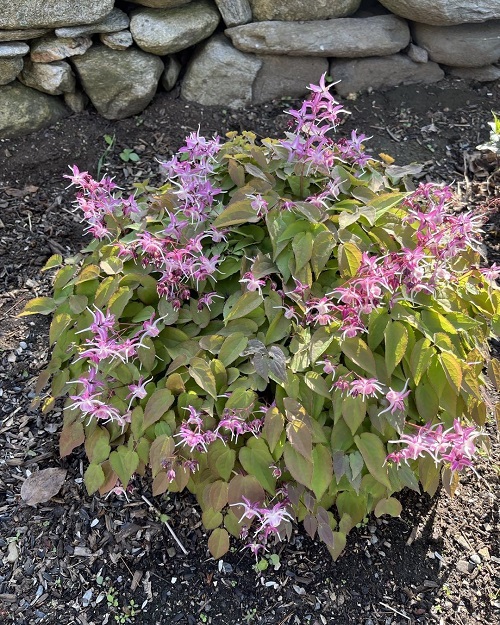
Botanical Name: Epimedium spp.
USDA Zones: 3-9
Epimedium, or barrenwort, features heart-shaped leaves with dainty, spurred flowers, giving a charming and delicate appearance to shaded areas.
10. Foxglove
Botanical Name: Digitalis purpurea
USDA Zones: 4-9
Foxgloves are recognized for their tall spires of tubular flowers in various colors, adding height and a touch of elegance to the partial shade garden.
Check out Perennial Flowers That Bloom From Spring to Fall Continuously
11. Hellebore
Botanical Name: Helleborus spp.
USDA Zones: 3-9
Hellebores offer evergreen leaves and cup-shaped flowers that bloom in winter or early spring, providing a burst of color and life to your shaded garden during colder months.
12. Wild Ginger
Botanical Name: Asarum canadense
USDA Zones: 4-8
Wild Ginger is characterized by its heart-shaped, glossy green leaves that carpet the ground, creating a dense, lush ground cover in partial shade areas.
13. Toad Lily
Botanical Name: Tricyrtis spp.
USDA Zones: 4-9
Toad Lilies feature orchid-like, spotted flowers that add a touch of exotic and unique beauty to your partially shaded garden, especially when other plants may not be in bloom.
14. Creeping Jenny
Botanical Name: Lysimachia nummularia
USDA Zones: 3-9
Creeping Jenny is celebrated for its vibrant, trailing golden-yellow leaves, which spill over containers and ground cover areas in partial shade.
Explore Perennial Combinations You Must Try
15. Lily of the Valley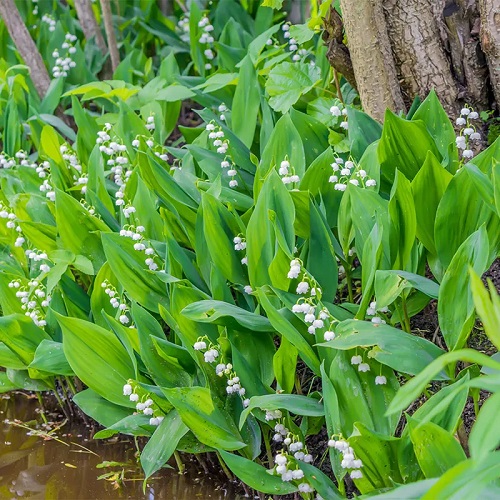
Botanical Name: Convallaria majalis
USDA Zones: 3-8
Lily of the Valley is adorned with dainty, bell-shaped, white flowers that emit a delicate, sweet fragrance, making it a charming and fragrant addition to your shaded garden.
16. Foamflowers
Botanical Name: Tiarella spp.
USDA Zones: 3-8
Foamflowers present intricate, foam-like clusters of pink or white flowers above heart-shaped leaves, introducing a dainty and enchanting presence to your partial shade areas.
17. Vinca
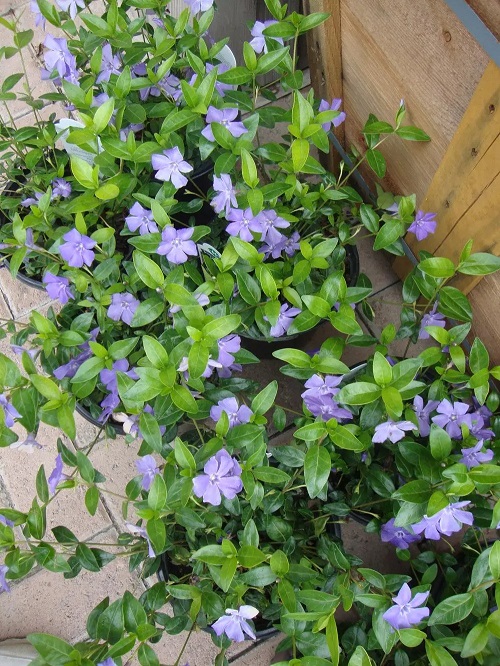
Botanical Name: Vinca minor
USDA Zones: 4-9
Vinca, or Periwinkle, displays glossy, evergreen leaves and blue or white star-shaped flowers, creating a lush and vigorous ground cover in shaded regions.
18. Hydrangea

Botanical Name: Hydrangea spp.
USDA Zones: 3-9
Hydrangeas are known for their large, globe-like clusters of colorful, mophead or lacecap flowers, offering a bold and striking display in partially shaded gardens.
19. Bletillas
Botanical Name: Bletilla striata
USDA Zones: 5-9
Bletillas feature orchid-like, terrestrial flowers with delicate, pleated petals in shades of pink, lavender, or white, adding an exotic and elegant touch to your garden.
20. Autumn Anemones
Botanical Name: Anemone hupehensis
USDA Zones: 4-8
Autumn Anemones grace your garden with charming, daisy-like flowers in shades of pink or white, providing late-season color and a graceful presence in partial shade areas.
21. Hakonechloa
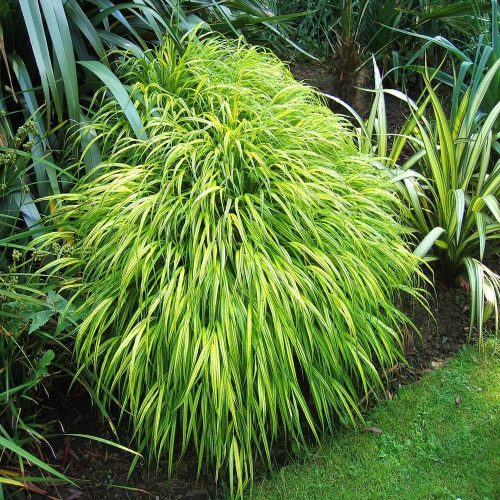
Botanical Name: Hakonechloa macra
USDA Zones: 5-9
Hakonechloa is prized for its graceful, cascading, and arching leaves, bringing a weeping, fountain-like effect to your shaded landscape offering a unique and fluid texture.
22. Leopard Plants
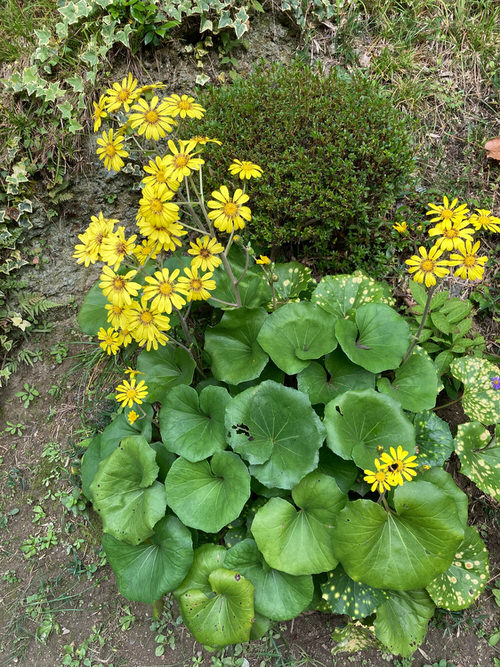
Botanical Name: Farfugium japonicum
USDA Zones: 4-8
Leopard Plants boast bold, kidney-shaped leaves and tall spikes of yellow, daisy-like flowers, creating a dramatic and attention-grabbing element in your partial shade garden.
Look at Edible Plants that Grow in the Shade in this Post
23. Spotted Deadnettles
Botanical Name: Lamium spp.
USDA Zones: 3-8
Spotted Deadnettles feature silvery, variegated foliage, and charming, tubular flowers, adding a soft and ethereal quality to ground cover areas in shaded spaces.
24. Bunchberries

Botanical Name: Cornus canadensis
USDA Zones: 2-6
Bunchberries offer petite, dogwood-like flowers followed by clusters of bright red berries, adding a touch of charm and color to your shaded garden.
Have a Look at the Perennials for Shade That Bloom All Summer
25. Clematis
Botanical Name: Clematis ‘Princess Diana’
USDA Zones: 4-9
Clematis is a brilliant flower for the shaded spots in your yard. You can also train some varieties to climb easily up the wall!
26. Blue Ice Amsonia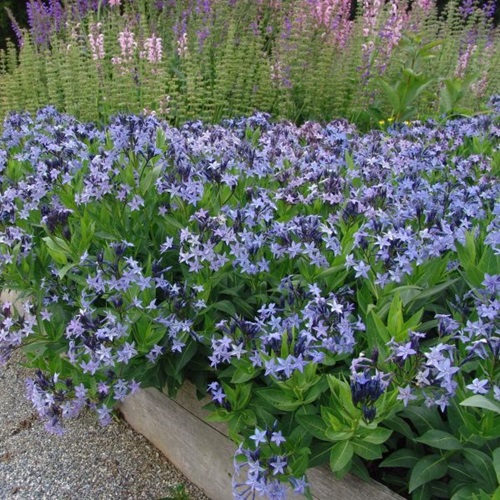
Botanical Name: Amsonia ‘Blue Ice’
USDA Zones: 4-9
Blue Ice Amsonia is a native perennial suitable for mass planting. It produces star-shaped dark lavender blue flowers in early spring and maintains cool-toned dark green foliage
27. Sedum
Botanical Name: Sedum
USDA Zones: 7-11
This low-maintenance succulent adds a splash of color to any garden setting. Its ability to adapt to less sunny conditions makes it a go-to for spots where other sun-loving perennials might struggle.
Check out the most popular sedum varieties here
28. Fig
Botanical Name: Ficus carica
USDA Zones: 7-10
Varieties like brown Turkey fig, Chicago hardy fig, and Celeste fig are champions of the shaded spot! They do exceptionally well and produce delicious fruits!

